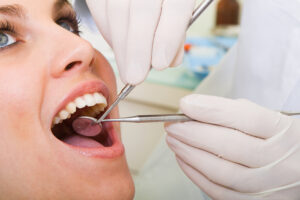
You spent months or even years wearing braces to get that perfect smile—so why do teeth start shifting again? Many people think once braces come off, their teeth will stay in place forever. But that’s not always the case.
Orthodontic relapse happens when teeth move back toward their original positions after treatment. This can be frustrating, especially after all the time and effort spent getting them straight. The good news? It’s preventable.
Your teeth aren’t locked in place once braces are removed. Without the right care, natural forces—like tongue pressure, jaw movement, and even everyday habits—can cause them to shift. That’s why retainers exist.
If you’ve noticed small changes in your smile or feel your teeth aren’t as straight as they were, it’s not too late to take action. Understanding why orthodontic relapse happens and what you can do about it is the key to keeping your smile looking great.
What Is Orthodontic Relapse?
Teeth don’t stay in one place forever. Even after braces or aligners do their job, they can slowly start shifting again. Orthodontic relapse happens when teeth move back toward their original positions after treatment. This is common, but it can be avoided with the right steps.
The mouth is always changing. Every time you talk, chew, or swallow, your tongue and jaw put pressure on your teeth. Over time, these small, everyday movements can cause them to shift. Even properly aligned teeth aren’t locked in place. Without reinforcement, like a retainer, they naturally want to move.
Gums and bone also play a role. After braces come off, the bone around your teeth is still adjusting. If teeth aren’t held in position long enough, they may not stay put. Retainers help keep them from drifting, making them a key part of keeping a straight smile long-term.
Why Do Teeth Shift After Braces?
Braces can move teeth into place, but keeping them there is another story. Orthodontic relapse happens for many reasons, and understanding why teeth shift can help prevent it.
Biological Memory
Teeth aren’t just sitting in place—they’re held by ligaments and surrounded by gum tissue. These ligaments stretch and shift during orthodontic treatment, but they don’t forget where teeth used to be. Without something to hold them in place, they slowly pull teeth back toward their original positions.
Natural Aging Process
Teeth continue to shift as people get older. Bone density changes, gums recede, and the jaw naturally shifts. Even people who never had braces notice that their teeth move slightly over time. Without reinforcement, this process happens faster.
Inconsistent Retainer Use
Retainers are the only thing stopping teeth from shifting after braces. Skipping them, even for a short time, gives teeth a chance to move. The longer retainers are avoided, the harder it is to keep teeth in place.
Late Jaw Growth
The jaw keeps growing into early adulthood, and sometimes even longer. Even after braces, small changes in jaw alignment can push teeth out of position.
Oral Habits
Daily habits put pressure on teeth. Nail-biting, thumb sucking, and excessive tongue thrusting can all lead to gradual shifting. Even something as simple as resting a hand against the jaw too often can have an effect over time.
Signs That Orthodontic Relapse Is Happening
Teeth don’t shift overnight, but small changes can add up. Orthodontic relapse starts slowly, and the sooner it’s caught, the easier it is to fix. Paying attention to early warning signs can help keep teeth from moving too far out of place.
Tight Feeling in Retainers
Retainers should fit the same way every time. If they suddenly feel tight or uncomfortable, it means teeth have already shifted. The more time passes without wearing them, the harder they become to put on. This is one of the first signs of relapse.
Small Gaps or Crowding
Even tiny changes in tooth spacing are a red flag. Gaps that weren’t there before or teeth that start overlapping slightly can mean movement is happening. These shifts might not seem like a big deal at first, but they often get worse over time.
Shifts in Bite Alignment
If chewing feels different or teeth don’t meet the same way they used to, they might be moving. A small shift in alignment can cause discomfort or even jaw pain. If biting down feels uneven, it’s a sign that relapse may already be happening.
Increased Tooth Sensitivity
Shifting teeth can expose areas that weren’t previously exposed, making them more sensitive to hot or cold foods. If certain teeth start feeling sore or sensitive without another explanation, movement could be the cause.
The Role of Retainers in Preventing Relapse
Braces straighten teeth, but they don’t keep them in place forever. Once braces come off, teeth still need support to stay put. Without it, they can shift back over time. That’s why retainers are so important in preventing orthodontic relapse. They hold teeth in their new position while bones and ligaments adjust.
Fixed (Permanent) Retainers
These are thin wires bonded to the back of teeth, usually on the lower front ones. They’re great for keeping teeth in place long-term because they stay on 24/7. Since they’re not removable, there’s no risk of forgetting to wear them. However, they do require good brushing and flossing habits to keep them clean.
Removable Retainers
These come in clear plastic or wire-and-acrylic styles. They need to be worn consistently, especially in the first few months after braces. Over time, wear time is reduced, but stopping completely can lead to shifting.
How Long Should Retainers Be Worn?
For the first few months, full-time wear is necessary. After that, most people switch to wearing them at night. Many orthodontists recommend lifetime nighttime wear to ensure teeth stay straight. A few nights without a retainer might not seem like a big deal, but over time, even small gaps can develop.
Common Mistakes That Lead to Orthodontic Relapse
Keeping teeth straight after braces takes effort. Many people don’t realize how easy it is for teeth to shift back. Small mistakes can cause orthodontic relapse, undoing months or even years of treatment.
Not Wearing Retainers as Directed
This is the biggest mistake people make. Retainers are the only thing keeping teeth in place once braces come off. Skipping a few nights might not seem like a big deal, but even minor shifting can happen fast. The longer they go unworn, the harder it becomes to fix the movement.
Skipping Follow-Up Appointments
Orthodontists don’t schedule checkups just for fun. These visits help catch small shifts before they turn into bigger problems. Teeth can start moving even with regular retainer use, and these appointments help keep everything on track.
Assuming Teeth Will Stay Put Naturally
Teeth don’t just “lock” into place after treatment. Without retainers, natural forces in the mouth—like tongue pressure and chewing—can push them back over time. Even people with naturally straight teeth experience movement as they age.
Engaging in Bad Habits
Chewing on ice, biting nails, or grinding teeth can all put pressure on them. These habits may seem harmless, but over time, they can change the way teeth fit together. Using a nightguard for grinding and breaking bad habits early can help keep a straight smile.
What to Do If Teeth Start Moving Again
Teeth can shift at any time, even years after braces. Orthodontic relapse doesn’t mean all progress is lost, but the sooner it’s addressed, the easier it is to fix. Small changes can often be corrected without full retreatment, but ignoring them can lead to bigger problems.
Consult Your Orthodontist Early
If teeth feel different or look slightly out of place, it’s best to get them checked. Orthodontists can catch minor shifts before they get worse. Waiting too long can turn a simple fix into a longer process.
Get a New Retainer
Retainers don’t last forever. If an old one doesn’t fit properly or feels tight, it may need to be replaced. A properly fitted retainer can often stop shifting and even help move teeth back into place.
Consider Retreatment
If teeth have moved significantly, braces or aligners might be needed again. This doesn’t always mean a full set of braces—sometimes, short-term treatment is enough to realign teeth. Clear aligners can also be an option for minor adjustments.
Use Retainers More Consistently
For minor shifting, simply wearing a retainer more often can help. Increasing wear time, especially at night, may gradually move teeth back. The key is catching the movement early and taking action before it gets worse.
Long-Term Strategies to Maintain Straight Teeth
Keeping teeth straight isn’t just about braces—it’s about long-term care. Even years after treatment, orthodontic relapse can happen if teeth aren’t properly maintained. Simple habits can make all the difference in keeping a straight, healthy smile.
Commit to Retainers for Life
Teeth never completely stop moving. Wearing a retainer a few nights a week is the easiest way to prevent shifting. Skipping it for too long can lead to noticeable changes, making it harder to keep teeth in place.
Maintain Good Oral Hygiene
Strong teeth and healthy gums help with stability. Brushing, flossing, and regular dental cleanings keep the bone and tissue around teeth in good shape. When gums and bone stay healthy, teeth are less likely to shift.
Be Mindful of Oral Habits
Small habits can cause big changes over time. Grinding teeth, biting nails, chewing ice, or constantly pushing against teeth with the tongue can all contribute to movement. Being aware of these behaviors helps prevent unnecessary shifting.
Regular Dental Visits
Checkups aren’t just for cavities. Dentists can spot early signs of shifting and recommend small corrections before bigger problems develop. Regular monitoring keeps everything on track.
Final Thoughts on Preventing Orthodontic Relapse
Braces and aligners straighten teeth, but keeping them that way takes commitment. Orthodontic relapse is a natural process, but it doesn’t have to undo years of work. Wearing retainers as prescribed, maintaining good oral habits, and catching small shifts early can keep teeth aligned for life. Small changes add up, and early action makes a big difference in preserving that perfect smile.
Protect Your Smile for Life
Keeping your teeth straight doesn’t stop when braces come off. Orthodontic relapse is preventable with the right habits and care. If you’ve noticed changes in your smile or need guidance on retainers, don’t wait—take action now.
Schedule a consultation today with the experts at Palo Alto Orthodontics and keep your smile looking its best for years to come.




